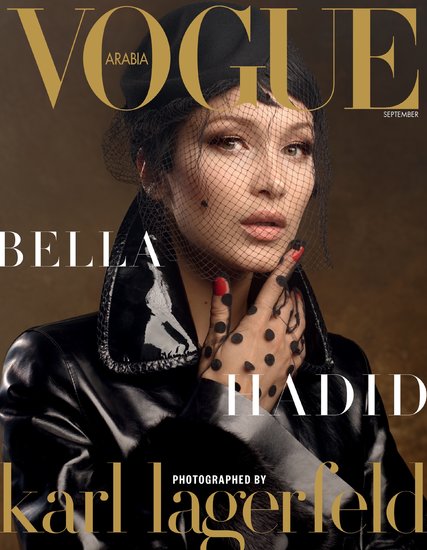
It probably won’t come as surprise to readers that the majority if not all of women’s and fashion magazines are losing the battle when it comes to engaging, interesting and insightful read. Editorials now sound more like someone else’s press release and the ever-growing number of interviews is nothing more than an eloquently written ode to the subject in question and everything they lay their eyes on. Being able to see through this travesty, readers turn away from the glossy mags in staggering numbers.
Vivid and enticing, the art of commercial photography is also slowly becoming a thing of the past, especially for the small issue and niche magazines. With some dull and poorly-lit images – that resemble the Instagram feed of a 13-year-old – printed magazines and certain brands embrace the new trend made cool by unqualified ‘mobile phone photographers’ with ‘millions’ of pseudo social media followers.
And if one wonders what drives the change, the word of advice is to follow the money. But it’s not only the new-comers and niche publications that are struggling with the balancing act between keeping ‘their books healthy’ and delivering engaging and educational content to their readership.
Most recently, a printed Vogue Arabia and online BoF were named and shamed by TheFashionLaw for engaging in the ‘murky’ practices of ‘selling themselves out’ for a big buck.
How Vogue Sold Itself to FENDI

The so-called Vogue Editorial in question features Bella Hadid dressed head to toe in Fendi on the front cover in campaign ‘shot’ by Karl Lagerfeld. While not out of the ordinary on its face, notes The Fashion Law, this cover – and the circumstances that surround it – becomes interesting if we consider a few facts.
“First: Cover star Bella Hadid is the current face of Fendi; she appeared in the Italian design house’s most recently-released ad campaign. Second: Karl Lagerfeld, who photographed the cover and corresponding editorial, is the creative director of Fendi’s womenswear collection. Third: Hadid is styled in head-to-toe Fall/Winter 2017 Fendi for the cover and corresponding editorial. And lastly, let us not overlook the fact that Fendi spends big advertising dollars to appear in Conde Nast publications – Vogue Arabia certainly falls under that umbrella.”
While none of these elements are inherently problematic, when taken together, it becomes just one of many testaments to how fashion magazines have allowed their editorial judgment to be corrupted by the luxury brands that shower them with advertising money. As former British Vogue editor, Lucinda Chambers put it: “The June cover with Alexa Chung in a stupid Michael Kors T-shirt is crap. He’s a big advertiser, so I knew why I had to do it. I knew it was cheesy when I was doing it, and I did it anyway.”
The most insulting part of this clandestine dealing is perhaps the fact that readers of these fashion magazines pay money to be inspired and told what‘s ‘cool’. Gullible readers see these publications as an authority on the subject. What happens, in reality, is that ‘fashion truths’ of what is cool and what isn’t are bestowed upon the reader. These so-called truths have nothing to do with style, trend or even the opinion of the editor but with the advertising budgets of each individual brand. Profitability above the quality of content.
Personality features exercise ego-stroking
As to the interviews and ‘personality features’, in an effort to remain profitable, certain publications go as far as to re-writing the history of and ‘media-pamper’ completely unrelated to their chosen niche ‘personalities’. Or, worse still, engage in quite blatant white-washing. One good example is the recent glamourised Vogue coverage of Clinton’s aide Huma Abedin. Vogue’s meticulous attempt to build Huma a glossy profile followed shameless ten-page feature of Clinton a few months earlier.
“The June cover with Alexa Chung in a stupid Michael Kors T-shirt is crap. He’s a big advertiser, so I knew why I had to do it. I knew it was cheesy when I was doing it, and I did it anyway.” Lucinda Chambers
Vogue is not the only magazine engaging in ‘ego-stroking for money’. One of the recent examples highlighted by The Fashion Law concerns ‘renowned’ Fashion blog-turned-success-story Business of Fashion. In particular, BoF’s “The 16 Best Companies to Work for in Fashion 2017” list. “The vast majority – if not all – of the companies that appear on BoF’s highly-promoted “Best Companies” list are active and in many cases, longstanding, advertisers on the publication’s site. That list did not, at the time of publication, disclose that it primarily consists of and serves to promote BoF advertisers.”
As to the nature of the questionnaire prepared by BoF to select “The Best Company to Work For,” it collected far more wholly irrelevant personal information that might be reasonably necessary for the purposes of the survey. Such aggressive collection of personal data under the disguise of a genuine survey is, of course, a different matter entirely.
John Dalberg-Acton once said: “Power tends to corrupt, and absolute power corrupts absolutely.” Add money to the equation and you will get a pretty good picture of the hot coal bed the majority of fashion and women’s magazines find themselves balancing on.
The ‘Native advertising’ is believed to provide readers with educational information and appears more natural. With sponsored content taking such large proportion of publishing Return On Investment it is surprising that only less than a quarter of magazine businesses has dedicated staff to deliver commercial content, according to Media Briefing Survey.
Concerns over editorial integrity and fears that consumers will be confused by the sponsors’ role in content origination have never been more relevant.
Editor in Chief of Ikon London Magazine, journalist, film producer and founder of The DAFTA Film Awards (The DAFTAs).




